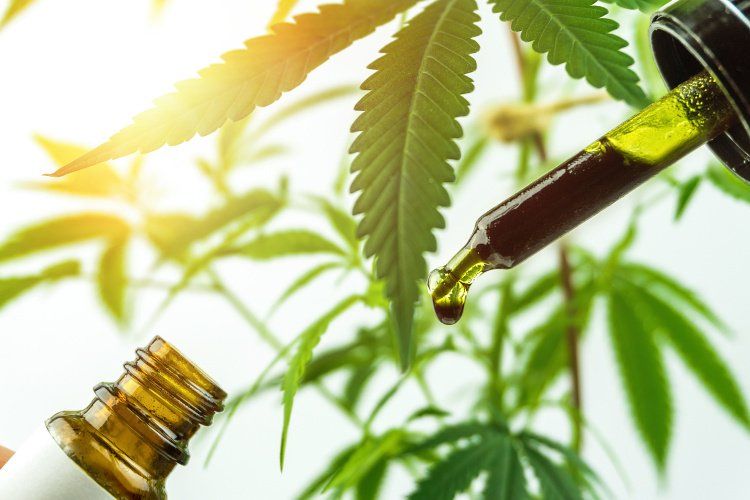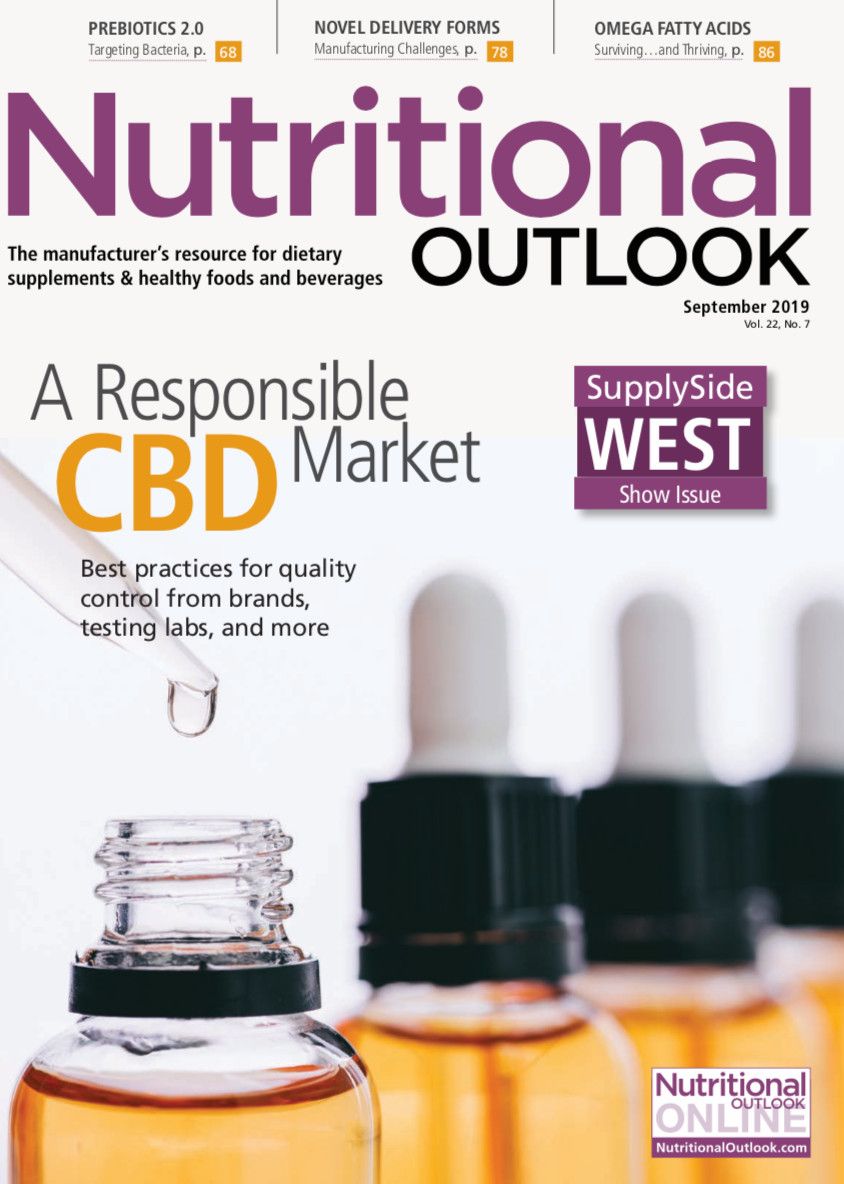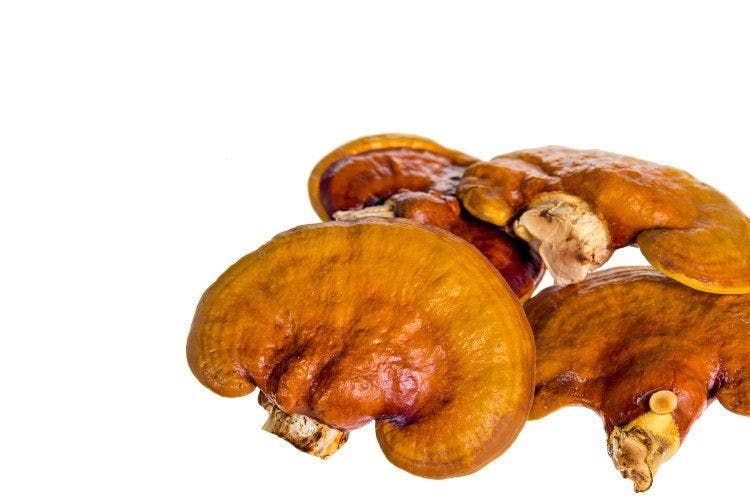Best practices for CBD testing, from industry experts
Analytical testing and regulatory experts advise on how to test for CBD quality.
Photo © AdobeStock.com/MysteryShot

• This article is the second in a three-part series written by the authors for Nutritional Outlook magazine.
When it comes to establishing safety and maintaining the quality of botanically derived food ingredients, standardization of key components and the setting of rigorous specifications are essential. This is especially true for hemp-derived ingredients, including cannabidiol (CBD) preparations, which have recently experienced a surge of interest since the 2018 Farm Bill authorizing hemp agriculture and removing hemp as a controlled substance was signed into law.
Manufacturing extracts of natural products can be especially challenging because there is so much inherent natural variation, making it difficult to prepare consistent finished products that meet established specifications. Genetic, environmental, and processing factors all impact the quality and composition of the botanical material and finished products derived from it. There is a vast array of phytochemicals present in Cannabis sativa L., including cannabinoids, terpenes, and phenolic compounds. The concentration of these compounds is known to vary based on tissue type, age, chemotype, growth conditions, harvest, and storage conditions. In order to properly analyze a hemp extract or CBD ingredient, it is essential to understand the compounds at hand as well as best practices when it comes to testing.
Understanding Cannabis
For Cannabis, genetics play a key role in the levels of the cannabinoids CBD and THC (delta-9 tetrahydrocannabinol), the two active compounds in the plant that have historically garnered the most interest. The term cannabis is typically used to refer to the chemotype optimized for THC levels, whereas the terms hemp or industrial hemp are generally used to refer to Cannabis varieties in which the THC content is not more than 0.3% (on a dry weight basis).1 Furthermore, hemp seed is known to contain only trace amounts of CBD and THC, and preparations of hemp seed oil (GRAS Reference Number, GRN, 778), hemp seed protein (GRN 771), and dehulled hemp seed (GRN 765) have achieved Generally Recognized as Safe (GRAS) status with subsequent “no questions” letters from FDA.
Terpenes are a class of organic compounds common to plants that have characteristic odors and are the primary components of essential oils derived from plants and flowers. In Cannabis, these terpenes include D-limonene, beta-myrcene, alpha- and beta-pinene, linalool, terpinolene, and beta-caryophyllene. Phenolic compounds, including phenolic acids, flavonoids, stilbenes, and lignans, are also present in hemp. A review by Andre et al. (2016) provides an excellent overview of the compounds that have been identified in Cannabis as well as the current biotechnology surrounding Cannabis sativa production.
Best Practices for Hemp-Extract and Hemp-CBD Analysis
Documentation
It is essential to maintain an established and thorough “paper trail” when it comes to sourcing, manufacturing, and analyzing food ingredients, including those derived from hemp. The trade certification group U.S. Hemp Authority recommends that electronic or hard copy records should be maintained for at least five years, and should include the provenance of the hemp seed, the variety, planting and harvest records, processing records, and analytical results. Furthermore, manufacturers should always follow current good manufacturing practices (cGMPs), as discussed further in the following section.
Characterization
Given the phytochemical complexity of Cannabis, evaluating the typical levels of phytochemicals present in the hemp plants used to prepare CBD extracts is an important part of the quality-control process. Proximate testing can provide important information about the moisture, protein, fat, fiber, and ash content of the source material, which can be applicable to selecting an appropriate CBD-extraction method.
Identification testing should be utilized to ensure the correct variety of Cannabis sativa is used and to verify that the raw material is free from botanical adulterants, such as Acer palmatum (Japanese maple), Datisca cannabina (false hemp), Dizygotheca elegantissima (false aralia), Hibiscus cannabinus (kenaf), Potentilla recta (sulphur cinquefoil), and Urtica cannabina (nettle). Thin-layer chromatography (TLC) is typically used to identify Cannabis and can also be used to determine chemotype (i.e., cannabis vs. hemp) as well as indicate any of the potential botanical adulterants for which macroscopic and microscopic visual inspection methods are insufficient.
Standardization
Given the natural variation of Cannabis, it is necessary to standardize extracts derived from hemp. Manufacturers should specify the nature and quantity of reference substances in the extracts to ensure batch-to-batch consistency for consumers, as well as create a uniform product for which to establish safety. Standardization can be achieved by blending multiple batches, introducing refining steps to the manufacturing process, or optimizing harvest conditions so that the constituents are present in the established range. For products such as CBD oil, reference substances should include cannabidiol and an array of the predominant terpenoids. Monoterpenoids and sesquiterpenoids (such as alpha- and beta-pinene, limonene, terpinolene, linalool, caryophyllene, and humulene) comprise approximately 50%-90% and 7%-48% of the essential oil extracted from fresh material, respectively.2
Both gas chromatography (GC) and high-performance liquid chromatography (HPLC) techniques can be used to quantitate cannabinoids and other components present in CBD extracts. While there is currently no “gold standard” method of analysis, the American Herbal Pharmacopoeia (AHP) outlines methods of analysis in its 2014 Cannabis Inflorescence monograph, and AOAC International published “Standard Method Performance Requirements for Quantitation of Cannabinoids in Dried Plant Materials” in 2017.
Specifications
Establishing complete and thorough specifications is an integral step towards ensuring product safety, suitability, and quality of hemp-derived ingredients. Furthermore, having a well-characterized material is essential with regard to demonstrating safety-in-use, as the composition of the hemp extract has a direct bearing on the results of toxicology and metabolism studies. Given the dearth of publicly available information on genotoxicity, cytotoxicity, mutagenicity, acute and sub-acute toxicity, and other safety studies performed on hemp-derived extracts, it is likely that many manufacturers will need to undertake these studies on their ingredients, in which case well-defined specifications will be required.
It’s also essential to establish minimum specifications for all raw materials (i.e., solvents, flow agents, blending oils, antioxidants, etc.) and processing aids (i.e., resins, filters, etc.) used in the manufacturing process. Food-grade materials that comply with the appropriate 21 CFR and/or Food Chemicals Codex (FCC) requirements should be used at all times.
Physical
A physical description of the product should be included on the product specification sheet. The appearance, odor, and taste of the material are all relevant parameters that should be assessed through visual and organoleptic methods. In addition, particle size, tap density, or viscosity may also provide insight to the preparation.
Chemical
This section of the product specification sheet should include the acceptable ranges of the reference substances (i.e., CBD, terpenes) in the material.
Impurities/Contaminants
THC
Since hemp-derived CBD extracts are manufactured from low-THC Cannabis varieties (< 0.3% THC on a dry weight basis), there is an expectation that the level of THC will also be low in the finished product. FDA responded with “no questions” to GRAS Reference Number 778 for a hemp seed oil with a tolerance specification for THC less than or equal to 10 microgram/g.
Pesticides
Since CBD extracts are derived from botanical material that could be exposed to pesticides, it is important to test either the raw material or finished product for pesticide residues. The Pesticide Analytical Manual (PAM), available on FDA’s website, provides guidance on establishing pesticide limits. While the pesticide limit is zero (0) for crops for which no specific limit has been set, the limits are generally observed as the lowest analytically detectable levels, which are often reported as < 0.01 ppm.
Microbial & Fungal Contaminants
Tolerance limits for microbes and fungi should be established for food and dietary supplement ingredients and should be set as low as reasonably possible to ensure consumer safety.
Depending on the extraction method, the tolerance limits may require adjustment, but a good starting point for processed botanical materials, including CBD oil preparations, is as follows:
- < 10,000 CFU/g Total aerobic plate count
- < 10,000 CFU/g Total yeast and mold
- < 1,000 CFU/g Total coliforms
- < 1,000 CFU/g Bile-tolerant gram-negative bacteria
- Not detected in 1 g E. coli
- Not detected in 1 g Salmonella spp.
It should be noted that for CBD oils prepared using carbon dioxide or solvent-based extracts, the microbial limits can likely be reduced 10-fold.
Aflatoxins and ochratoxins are fungal metabolites that have been associated with hemp and hemp-derived ingredients and therefore should be tested in any CBD extract preparations. Aflatoxins B1, B2, G1, and G2 are produced by some strains of Aspergillus molds, and their ingestion can result in liver damage. Ochratoxin A is produced by certain strains of Aspergillus and Penicillium molds, and their ingestion can result in kidney damage. These mycotoxins are known potential contaminants of many food commodities, and methods have been developed to test for their presence by immunoaffinity assays. Fungal contamination can occur at multiple steps during the growth, harvesting, and storage process, so ideally, both the raw materials and finished products derived from hemp should be tested.
Heavy Metals
Tolerance limits for heavy metals should also be established for food and dietary supplement ingredients, and should be set as low as reasonably possible to ensure consumer safety. Plants grown outdoors in fields are likely to have more natural exposure to heavy metals than those grown in more controlled greenhouse environments. For hemp-derived products, heavy metal testing should include arsenic, cadmium, lead, and mercury. A good starting point for ingredients such as CBD oil is as follows:
- Arsenic less than or equal to 1 ppm
- Cadmium less than or equal to 1 ppm
- Lead less than or equal to 3 ppm
- Mercury less than or equal to 0.1 ppm
Peroxide Value
Because of the inherent nature of oil preparations to oxidize, manufacturers may also wish to establish a peroxide value limit, such as < 10 meq/kg, for CBD oil.
Residual Solvents
For any CBD extracts prepared using a solvent-extraction processes, it will also be essential to establish tolerance limits for residual solvents such as ethanol, propane, butane, and hexane. Residual solvent tolerance levels should be kept as low as reasonably possible to ensure consumer safety.
The International Conference on Harmonization of Technical Requirements for Pharmaceuticals for Human Use (ICH) established limits on solvents used in the manufacture of botanically derived products. The use of Class 1 solvents, including benzene and carbon tetrachloride, should be strictly avoided since they are known hazards. Class 2 solvents have individually determined permissible daily exposures (PDE), such as 2.9 mg/day for hexane. For Class 3 or other solvents, the residual solvent levels are not to exceed 0.5% by weight or 5,000 ppm per 10 g of product.
Prop 65
Hemp contains a number of compounds that have been added to the list of “Chemicals Known to the State to Cause Cancer or Reproductive Toxicity” (California’s Prop 65), including beta-myrcene, acetaldehyde, and pulegone. Since beta-myrcene is likely to be present in CBD oil, it should be quantitated and, if necessary, the appropriate warning should be added to the label of any products destined for sale in California.
Additionally, the current Prop 65 list includes heavy metals, pesticides, aflatoxins, and ochratoxin A, which have been discussed above. Manufacturers should monitor finished products for the presence of these components and label products for sale in California accordingly.
Stability
A full battery of shelf-stability studies should be conducted on at least one representative lot of material. These studies should include both accelerated and real-time conditions, and analysis of references substances and microbiological testing should occur at pre-determined intervals to ensure the product meets specifications until the reported expiry date.
Conclusion
As with any botanically derived food ingredient, developing robust specifications and quality-control procedures will ensure product consistency and support consumer confidence. The manufacture of consistent and well-characterized CBD extracts will also help researchers investigate the safety of these products and provide a basis for establishing the safety of this newly-emerging ingredient.
For additional reading, the following sources are recommended:
- Brenneisen R. “Chemistry and Analysis of Phytocannabinoids and Other Cannabis Constituents.” Forensic Science and Medicine: Marijuana and the Cannabinoids. Edited by: M.A. El Sohly. Human Press Inc., USA. (2007)
- Salgueiro L et al. “Raw materials: the importance of quality and safety. A review.” Flavour and Fragrance Journal. Published online August 19, 2010.
- American Herbal Pharmacopoeia. “Cannabis Inflorescence: Standards of Identity, Analysis, and Quality Control” Ed. Roy Upton et al. (2014)
- Andre CM et al. “Cannabis sativa: the plant of one thousand and one molecules.” Frontiers in Plant Science. Published online February 4, 2016.
- U.S. Hemp Authority Certification Program. “Guidance Procedures for Growers & Producers” (2018)
About the Authors:
As a team of experts, our companies collaborate together and are currently working with several CBD clients from seed to finished manufactured product.
Katrina Emmel, PhD, is the founder and president of analytical laboratory KemmelCal Inc. (www.kemmelcal.com). She is experienced in analytical method selection, data review, and establishing product specifications for ingredients used in foods and dietary supplements. Dr. Emmel has over seven years of experience in drafting, reviewing, and serving as an expert panelist for GRAS evaluations.
Evelyn Cadman is the owner and principal consultant for FDA Compliance Simplified (www.FDASimplified.com), offering technology evaluation, product development, and regulatory affairs services to the food, cosmetic, nutritional supplement, and biotech industries. She has worked in regulatory affairs and product development for FDA-regulated products since 1997.
Cheryl Dicks is managing partner of Live Well RACE and CBD Compliance Simplified (www.CBDcompliancesimplified.com). With over 20 years’ experience in the dietary supplement and pharmaceutical arenas, the company offers its clients support in product development, manufacturing, cGMP compliance, clinical trial development, quality management system development, and regulatory agency support and filings.
References:
- It should be noted in West Virginia Code, Chapter 19, Article 12E. Industrial Hemp Development Act, industrial hemp is defined as containing no greater than 1% THC. (http://wvlegislature.gov/wvcode/code.cfm?chap=19&art=12E)
- American Herbal Pharmacopoeia, “Cannabis Inflorescence: Standards of Identity, Analysis, and Quality Control” (2014)























